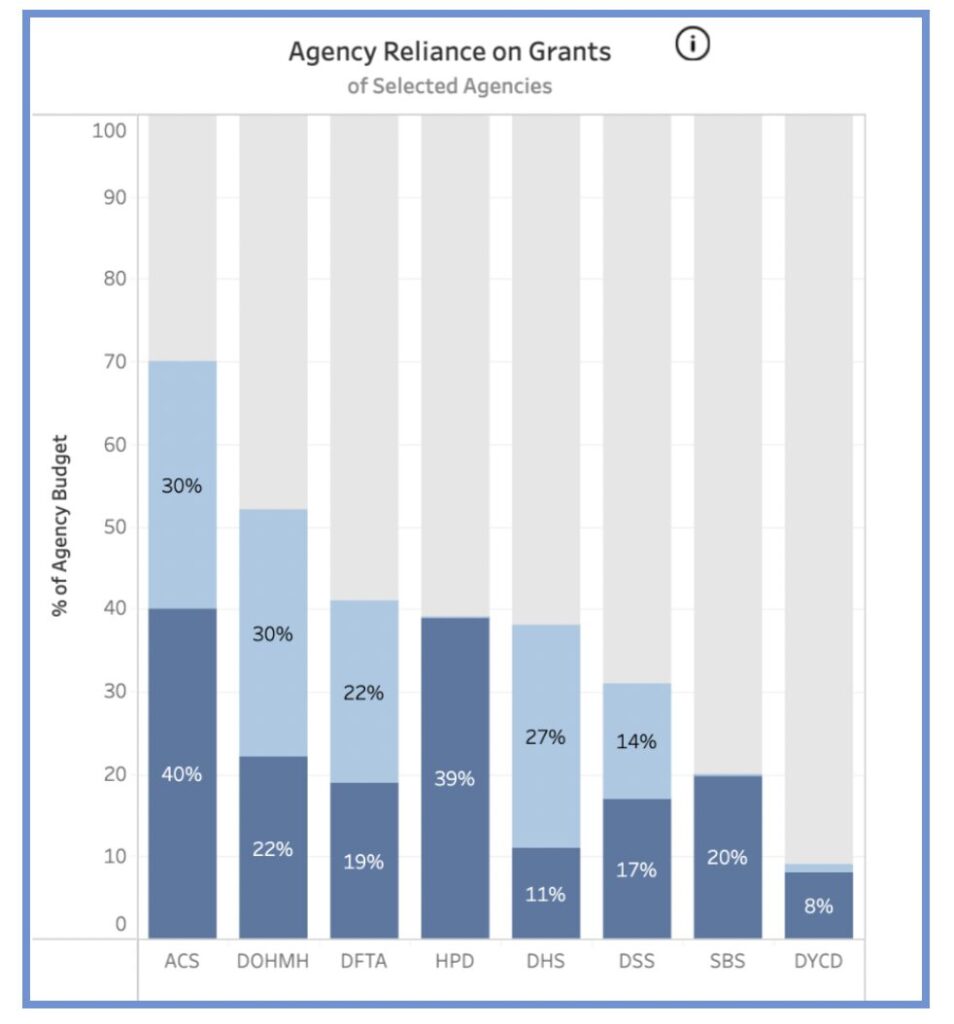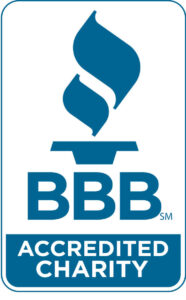NYC Budget Watch:
FY26 Executive Budget
Purpose
With increasing uncertainty about NYC’s funding for critical government services, FPWA aims to ensure that our members, and the wider nonprofit community, understand the City’s budget and have the tools to advocate for fair funding for individuals, families and communities.
The NYC Budget Watch series is designed to keep advocates up to date on the latest budget negotiations, providing facts and figures on the City budget proposals, with a special focus on what it all means for human services delivery.
In this report, FPWA analyzes the Executive Budget issued by the Mayor on May 1, 2025.
What is the Executive Budget?
The Executive Budget is the Mayor’s second proposal in the annual budget negotiation cycle. In this update, the Mayor adjusts their initial proposal to reflect updated financial and revenue projections as well as Council and community input.
Following the publication of the Executive Budget, the Council conducts a second round of targeted hearings during which advocates can provide testimony and make their voices heard before the final budget is decided on or before June 30.
The FY26 Executive Budget
A Fiscal Update Amidst Uncertainty
Mayor Adams’ has hailed the Fiscal Year 2026, “FY26”, Executive Budget as the “Best Budget” ever. The second proposal in this year’s budget negotiations, the City’s Executive Budget presents a $115.1 billion balanced budget for FY26 and increases proposed expenditures by a half billion over January’s Preliminary Budget.
But while the budget proposal promises to protect critical programs and expand after-school care, hidden cuts remain – particularly for the human services sector. Prolonged federal budget negotiations threaten to cascade into City and State revenues, creating risk for services.
In this report, FPWA analyzes the FY26 Executive Budget against FY25 current spending levels to get a better picture of how budget proposals leave gaps and create risks for human service agencies and vital services like community development, out-of-home care services, and more.
Budgetary Outlook Strong, but Economic Shifts Threaten City’s Fiscal Stability
At first glance, the Executive Budget presents a strong budgetary outlook, with future gaps in line with the City’s budgeting norms.
But a deeper dive into the numbers shows that the city is on shaky fiscal ground.
New tariff policies and other economic shocks have led the City to revise its projected growth rates down 15% in FY26, from an expected growth of 3.28% to 2.78%.
Yet despite an anticipated economic downturn, the City hopes it can sustain revenue levels needed to support vital services.
In fact, in the short term, the City has actually profited from greater economic volatility. Tariff policies, widely rejected by the market, caused a fire-sale of stocks. The City, which collects personal income taxes on stock trades, was able to reap revenue gains despite the market’s drop in value.
For this reason, despite DOGE clawing back millions of dollars in funding in FY25, the City outperformed its revenue projections, collecting $119.79 billion in revenue.
Unfortunately, this increase in revenue is likely to be temporary, with the City anticipating billions of dollars of loss of grants from federal cuts.
City Tries to Prepare for Expected Federal and State Aid Losses, But Gaps Remain
New York City is expected to take in $3.1 billion less in Federal grants than it did in FY25. Compounding this fiscal crunch is a $2.3 billion decline in State grants, which have also contracted in light of anticipated federal cuts.
To make up this loss in funding, OMB has looked for ways to increase city funds in the next fiscal year. The City is dipping into FY25’s revenues to allocate $5 billion dollars in advanced payments for the City’s Contracted workforce, doubling the typical rate.
But while these advanced payments can reduce the pain that New Yorkers experience, funding shifts could affect the City’s long-term economic stability.
In FY26, federal funds are expected to make up around 6% of the City’s overall budget, down from about 10% in a typical year, and 14% during the pandemic years. This accelerates a trend we have long observed through our NYC Funds Tracker, where the City has become more reliant on its own funds.
This decrease is significant because it exposes the City to greater risk in the event of a recession. The City’s tax base is subject to economic volatility that federal funds, which are allocated by Congress, are not.
What Cut’s Mean for Human Services
The City’s Executive Budget lays out how these funding shifts would affect City funding in the next fiscal year, with social services bearing the brunt.
The largest chunk of grant decreases for social services is actually from the State, which is removing shelter aid for asylum seekers no longer deemed necessary as the city’s shelter population has decreased substantially over the last year.
This loss of funding poses a serious operational threat to the human service sector, particularly in the long term. Human service agencies rely on grants for a significant percentage of their budget as shown in our NYC Funds Tracker.

While the advanced payments made by the City to non-profits can help counteract some of the strain from grant cuts, they cannot fill the gap.
In the Executive Budget, while some human service agencies have won budget increases, a majority face a decline in funding.
Although the Commission and Office on Racial Equity have received additional funding, the baselined-allocations for ACS, DHS, DHMH, DSS, HPD, and SBS do not match current year spending levels.
While typically, agencies expect additional midyear funding to help close the gaps between current spending levels and adopted levels, these kinds of increases may not be possible in the current year.
Some of this decline in funding is due to “re–estimates” of costs, in particular related to Shelter Intake asylum seeker funding that HPD receives, but most cuts represent significant declines in programmatic funding.
Over the last 5 years, demand for human services programs soared, with the number of SNAP recipients increasing by 15%, Medicaid by 25%, and cash assistance by over 50% from FY20 to FY24. Homelessness in New York City increased by 127% over that same period.
While the City tries to manage the economic insecurity caused by the federal government’s political games, advocates need to continue to make their voices heard. We can call attention to what the loss of these programs could mean – not just for those in need of a safety net, but for the long-term economic security of New Yorkers, and the country.
The impact of advocacy helped secure the $5 billion dollars in advanced payments and can be seen in the shifts from the Preliminary to the Executive Budget on contract spending. Thanks to the concerted efforts of advocates and public partners, some cuts have been clawed back.
Still, strain on human service non-profits remains. In particular, emergency food contractual services could face significant declines in funding (-14%). Funding for out-of-home contractual services, which support services including adult day care, senior center, nursing homes, assisted living facilities, family type homes, and/or summer camps, could decline 91% from FY25 spending.
Moreover, while the City fights a backlog of late contract payments, with over $1 billion dollars in unpaid contracts – the Executive Budget plans for further declines in City authorized staffing.
Just last year, the Mayor’s Office of Contract Service’s (MOCS) budget was cut 33% —along with a headcount reduction of 14 positions.
This year, the Mayor is proposing additional reductions to City staffing.
These staffing reductions include a reduction of 62 Department of Homeless Service workers, a 3.4% cut to agency staffing.
True Cost of Economic Security
Funding and staffing cuts not only represent an immediate threat to New Yorkers; they also reflect a declining long-term outlook for economic security.
Today, 62% of New York City households are economically insecure, according to a recent report commissioned by the National True Cost of Living Coalition, co-chaired by FPWA.
This means that nearly two-thirds of all households in New York City struggle to pay their bills and housing costs, afford health care and childcare, and save for their future. The number increases to a staggering 72% for households with children. Funding cuts are an attack on New Yorkers’ health, access to education, and economic opportunity.
Government cuts won’t create efficiency, they cut access to resources and make New Yorkers’ costs rise.
Table of Contents
Stay in Touch
Join our network and learn about FPWA events and news.
All rights reserved.
LEARN MORE
ABOUT FPWA
GET INVOLVED





